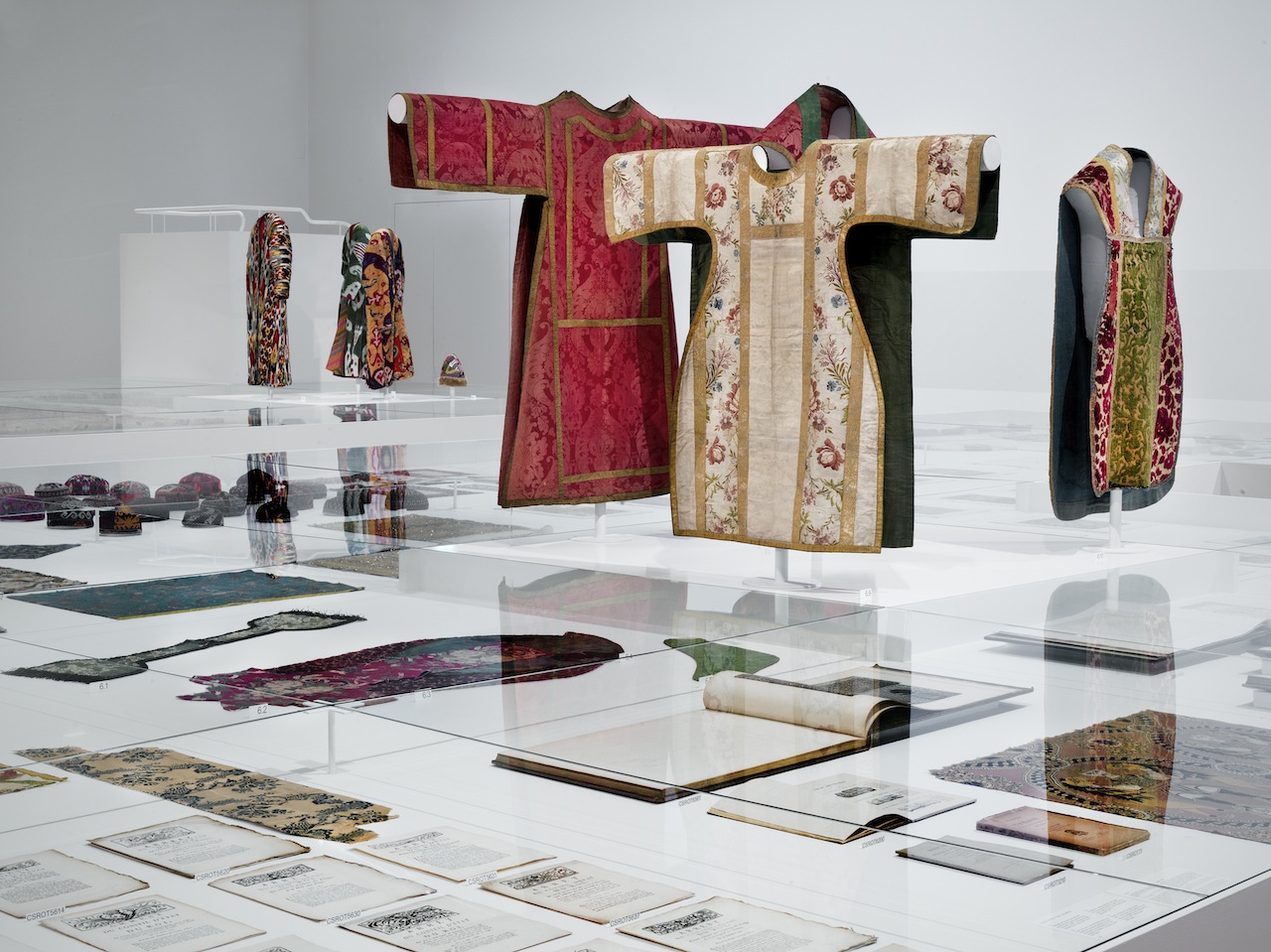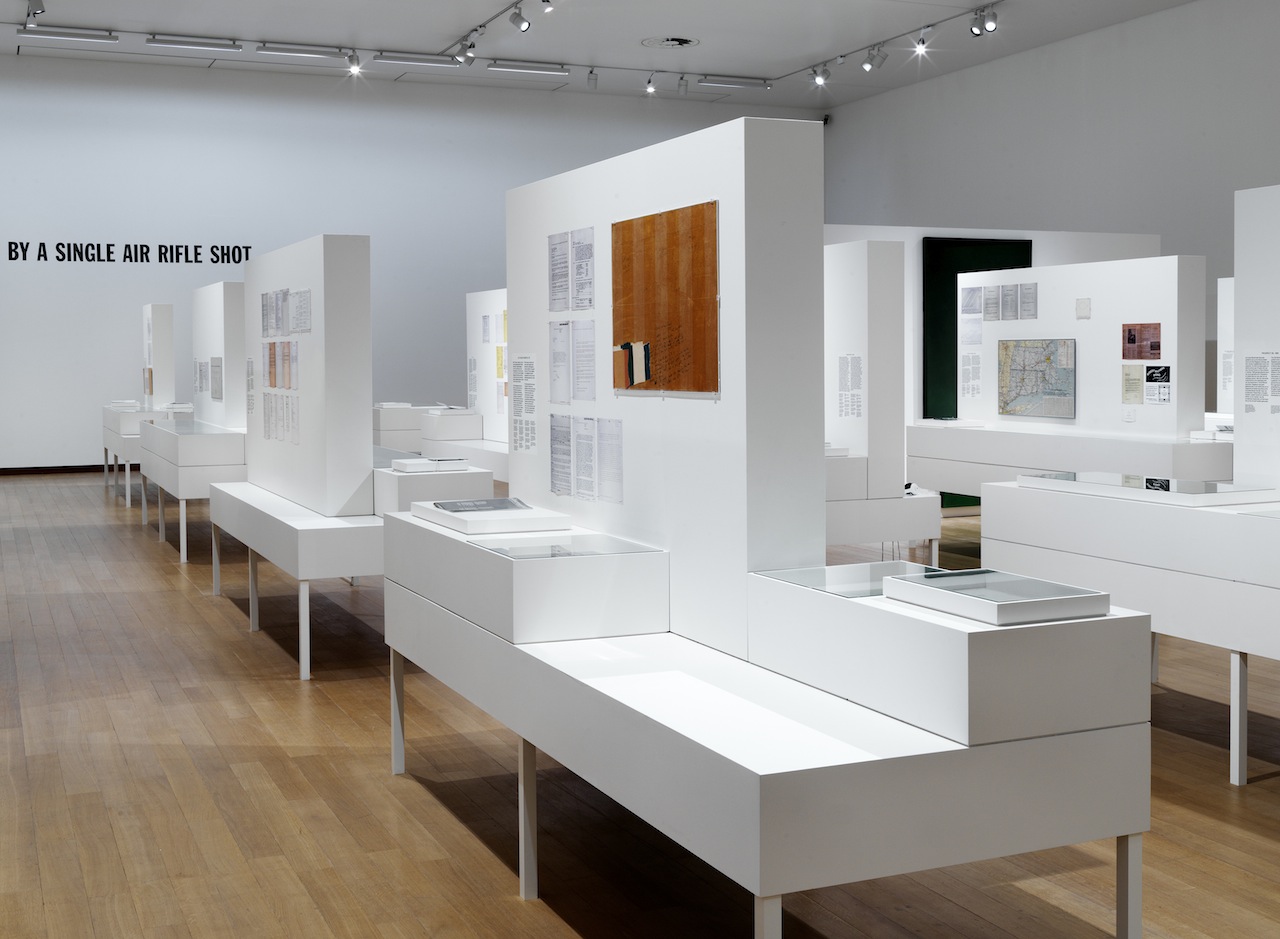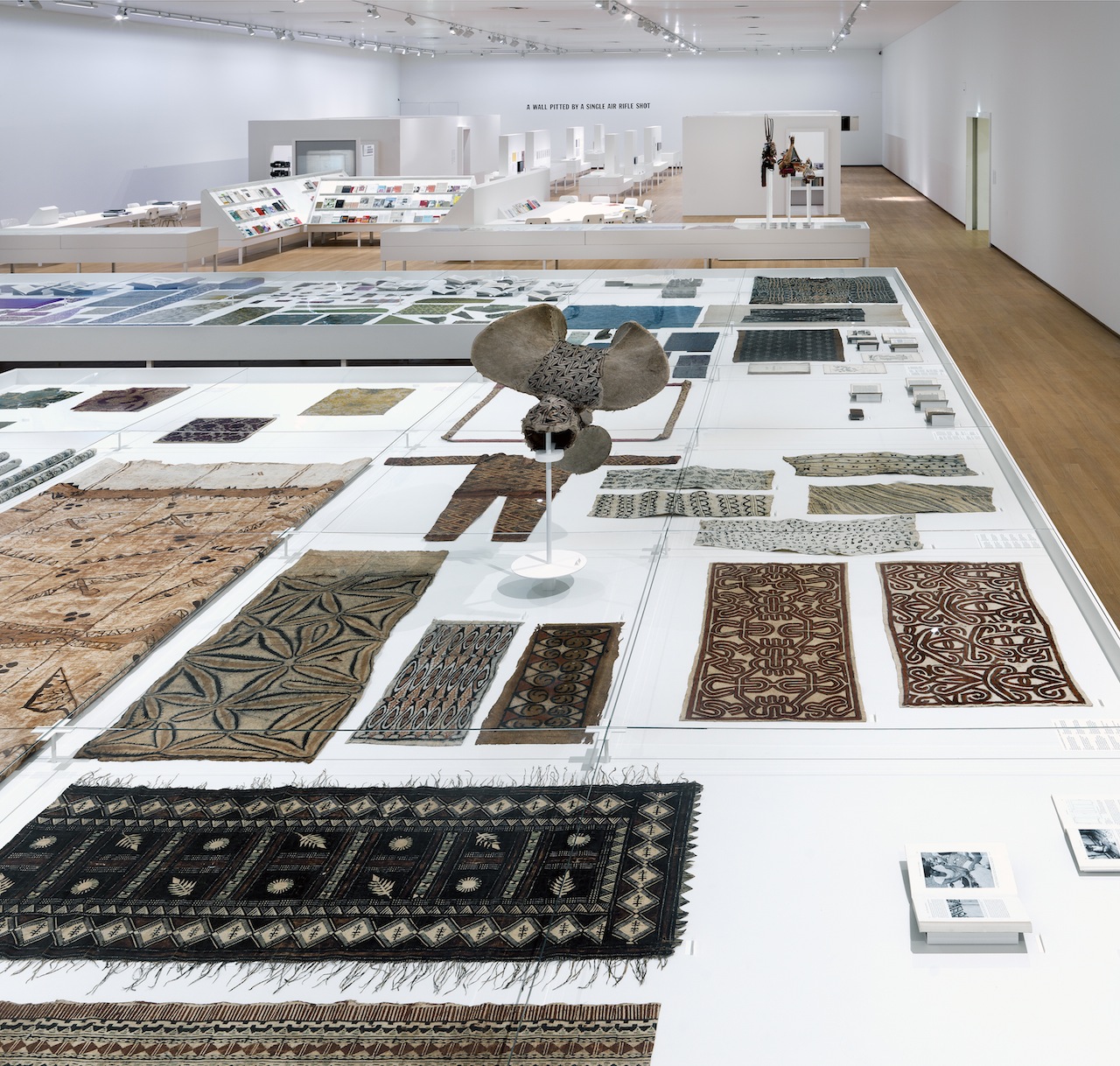Published on hyperallergic.com
The Aesthetics of Paperwork and Cultural Theory According to Seth Siegelaub
by on April 14, 2016

‘Beyond Conceptual Art,’ installation view (all photos by Gert Jan van Rooij unless noted)
AMSTERDAM — Running down a list of the manifold roles of Seth Siegelaub (1941–2013) can trigger some confusion: He was, variously, an art dealer, curator, publisher, plumber, bibliographer, rare book dealer, librarian, art collector, textile specialist, cataloguer of Marxism and mass media studies, researcher in time and causality, and on and on. The challenge of identifying these many hats foregrounds the Stedelijk Museum’s major exhibition Seth Siegelaub: Beyond Conceptual Art, curated by Leontine Coelewij and Sara Martinetti in cooperation with the Stichting Egress Foundation, which is the first attempt to present so many of his diverse activities at once.
In imagining a retrospective of Siegelaub’s life’s work, the central question would likely be: How could an institution possibly present a cohesive narrative covering all these disparate fields? A more lasting question quickly follows: How does this collision of categories challenge the parameters of the museum itself? The stakes of this project are that high, happily countering any fears that it is another blip in a surge of re-presentations of historical installations or exhibitions recasting curators as artists. Instead, the very idea of a singular retrospective of such a radically uncategorizable figure illuminates a critique embedded within each of Siegelaub’s activities: Our expectations of what an institution or an exhibition can be are simply too limited.

‘Beyond Conceptual Art,’ installation view
The exhibition is appropriately document-heavy, with material from Siegelaub’s archives at MoMA guiding us through his work from 1964 to 1971 in New York, when he operated within the contemporary art world as a gallerist and independent curator (before such a term even existed), publisher, and all-around representative of the artists he worked with, most famously conceptual artists Robert Barry, Douglas Huebler, Joseph Kosuth, and Lawrence Weiner. Driven by the liberating realization that “you don’t need a gallery to show ideas,” as he observed in conversation with Patricia Norvell in 1969, Siegealub abandoned that model in 1966, after the infrastructure of such a space proved unnecessary for the artists he exhibited. Between 1968 and 1971 he produced 21 exhibitions in formats so innovative that they arguably altered the entire course of contemporary art, including his seminal “catalogs-as-exhibitions” which allowed for the artworks included therein to be viewed and disseminated as documents and information, as opposed to singular objects and images Most notable among these are the so-calledXerox Book, January 5 – 31, 1969 (“The January Show”), the multi-sited March 1969 (or “One Month”), and July, August, September 1969, each of which embodied Siegelaub’s important premise that an easily circulated publication could communicate and be the “primary information” about an artwork.

‘Beyond Conceptual Art,’ installation view (image by Lauren van Haaften-Schick)
All of Siegelaub’s projects from this period are represented in various archival formats, including room reconstructions, correspondence and plans, and original photographs and notes that would become content for publications. These materials and the architecture of their presentation in this exhibit can border on fetishistic or theatrical at times: Does one really need to experience an approximation of the office rented for the January Show? Or see the cardboard squares Carl Andre used to make his indeterminate arrangements for theXerox Book? These and other inclusions appear at first as antithetical to conceptual art’s historical narrative of challenging the artwork’s status as a precious object. But their extreme materiality can also be read another way, reminding the viewer that these exhibitions were in fact first received in a particular place and time, and, in the case of the January Show, physical manifestation was important. Seen en masse, the overwhelming amount of material information produced and collected by Siegelaub in the making of these projects directly challenges the notion of dematerialization by which they have come to be characterized. The quantity of documents that represent March 1969 and July, August, September 1969 particularly supports this point: Although both ultimately manifested as singular publications, the vast paper trails of their making provide overwhelming evidence that these supposedly ephemeral activities were in fact highly dependent upon a robust network of communication and exchange, with Siegelaub’s phone and typewriter as the administrative apparatus at its locus.
By 1971, Siegelaub was already edging away from the art world. One of his final acts was the creation of The Artist’s Reserved Rights Transfer and Sale Agreement, co-authored by lawyer Robert Projansky and envisioned as the first standard-form contract for use by artists. The Artist’s Contract, as it came to be known, is represented in this exhibition by a collection of related materials compiled by contemporary institutional critique artist Maria Eichhorn, first shown in 1998 for a solo exhibition under the same name. Eichhorn’s archive on the Contract is presented in a line of overflowing binders containing press clippings, correspondence, and notes on its European translations, continuing the aesthetic of paperwork and recapitulating Siegelaub’s priorities of archiving, collecting, and international exchange.

‘Seth Siegelaub: Beyond Conceptual Art,’ installation view
In 1973 Siegelaub moved to Bagnolet, France, establishing both the imprint International General and the International Mass Media Research Center, a library focusing on Marxism and communication studies that operated out of his home. A reading area with a selection of the library’s holdings emphasizes his presence in Portugal during the Carnation Revolution and his interests in communications research and methodology, international communications, and cultural imperialism, among other topics. This phase of Siegelaub’s work remains unknown to many within the art community, but it deserves its place within the lineage of Marxist thought in contemporary cultural theory.

‘Beyond Conceptual Art,’ installation view
A deft curatorial move connecting the many threads of Siegelaub’s thought is revealed if one breaks chronological order and continues from the Artist’s Contract to the collection for Siegelaub’s Center for Research on Old Textiles (CSROT — “rot” being a joke on the collection’s condition), an independent research institute he developed in Amsterdam from 1986 to 2013, devoted to the study of hand-woven textiles and their central historical role in industrial production. Interspersed among a sea of vitrines containing textiles and books from the 10th through 20th centuries and drawing from every inhabited continent is yet another sequence of documentation: records of laws and contractual agreements concerning manufacturing regulations and conditions for textile laborers. High on the wall between these texts and the Artist’s Contract we find a work from Siegelaub’s own art collection, a signature typographic piece by Lawrence Weiner reading “TRANSFERRED.” This nodal trio renders legible Siegelaub’s core inquiries: the terms governing the transfer and transmission of cultural objects, and the shadow of labor and political history that covers their production.

‘Beyond Conceptual Art,’ installation view
Indeed, all of Siegelaub’s many practices can be found to revolve around one proposal: The way culture is communicated is symptomatic of the way it is produced. Taking up communication as subject and medium paved the way for examining the labor, legal, market, and material histories undergirding the flow of information and objects. Today, as the theoretical and historical framework of media infrastructure is inching its way into art historical discourse, Siegelaub’s investigations appear remarkably prescient. Considered through this lens, the exhibition can also be read as an overview and interrogation of media’s historical forms, identified by John Durham Petersas databases, cataloging systems, images, and writing, employed to record, transmit, and process culture; to manage subject, objects, and data; and to organize time, space, and power. That these are the same concerns still dominating contemporary art today reveals that we have barely begun to understand the vast influence of Siegelaub’s many legacies.
Seth Siegelaub: Beyond Conceptual Art continues at the Stedelijk Museum (Museumplein 10, Amsterdam) through April 17.